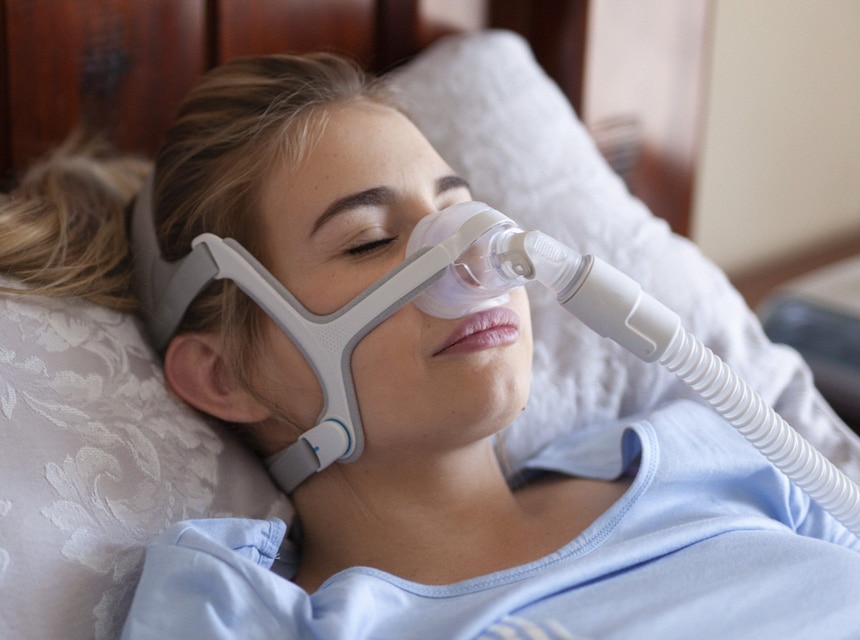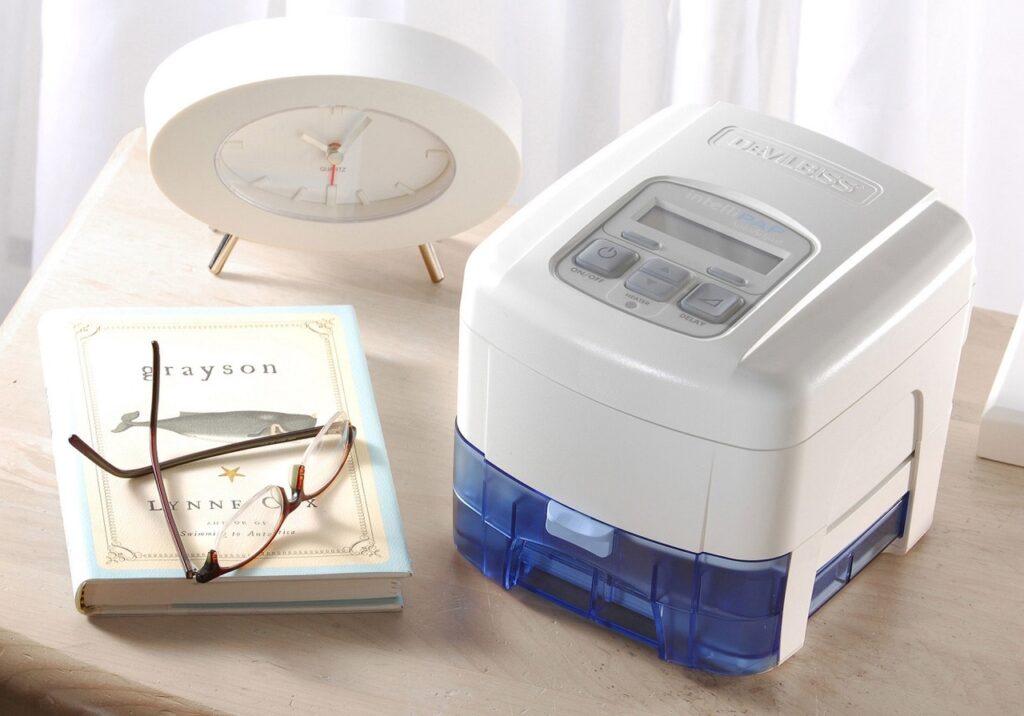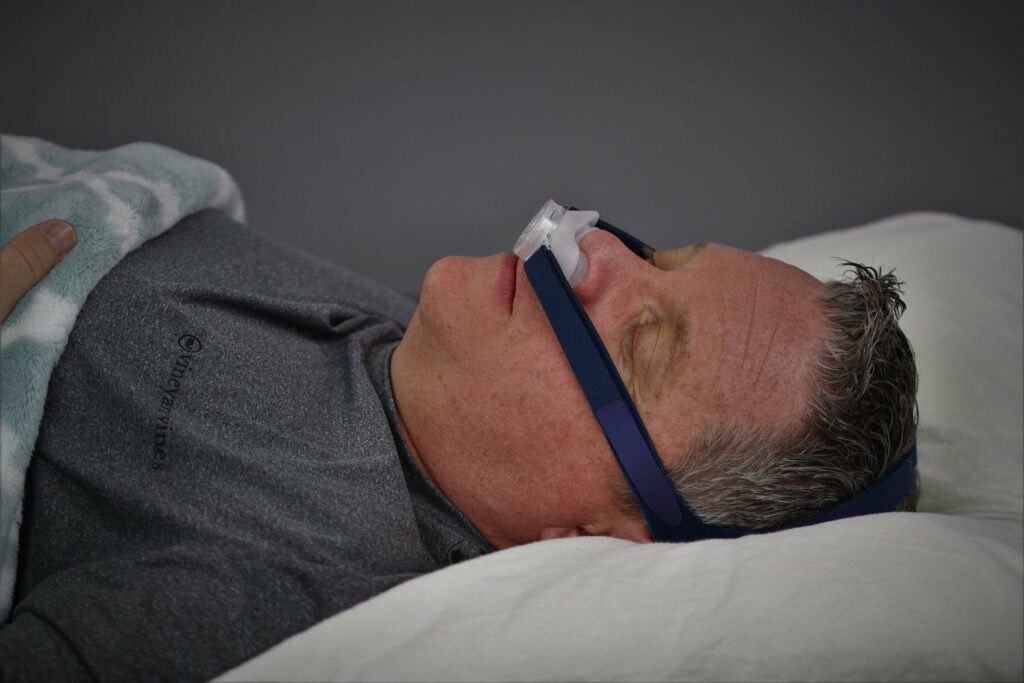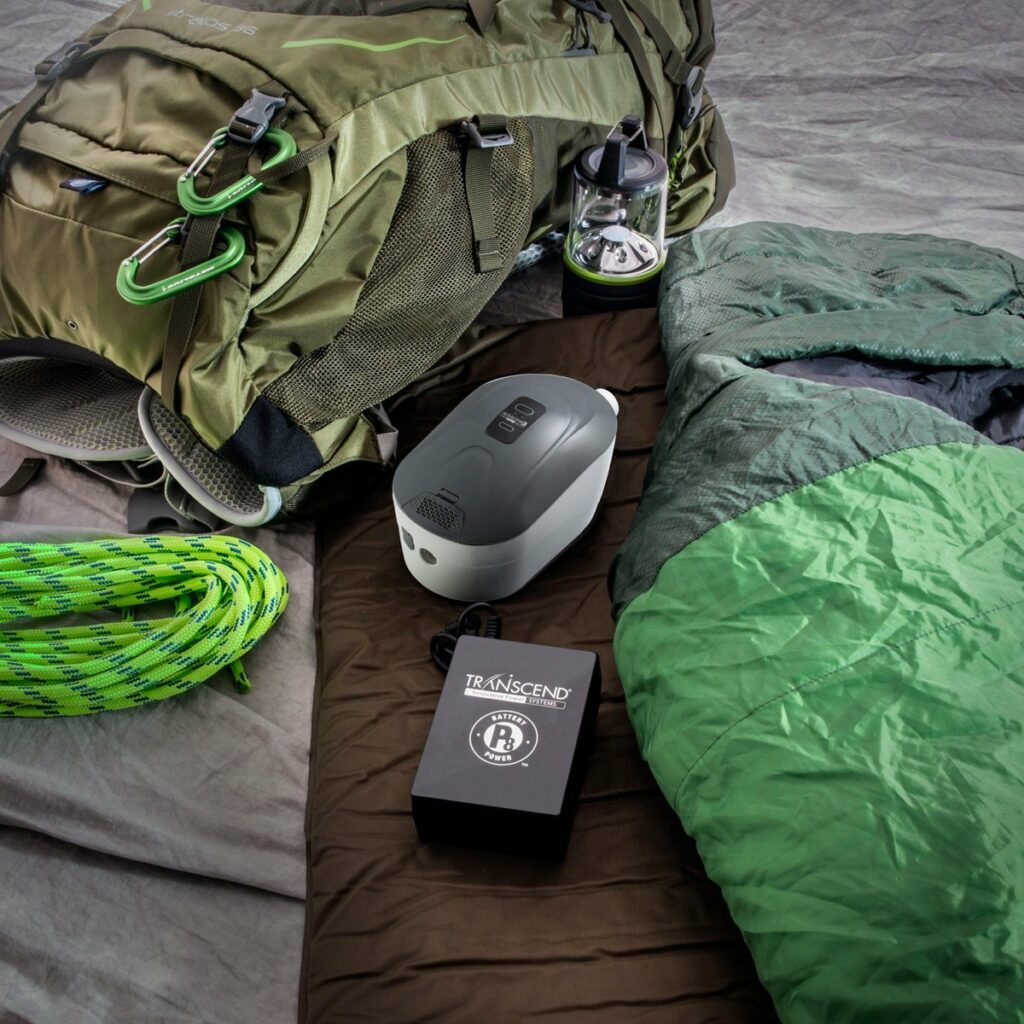

Sleep apnea is a condition that affects many people. Symptoms can include snoring, disrupted sleeping patterns, morning headaches, and daytime irritability. And in the long term, sleep apnea can lead to an increased risk of heart disease, type 2 diabetes, and even liver disease. Approximately 22 million adults in the US struggle from sleep apnea, and many of them don’t even know they have it.
And when it comes to treatment methods for sleep apnea, a phrase that many people come across is APAP vs. CPAP vs. BiPAP. This refers to the common sleep apnea treatment methods that use specific machines to help patients sleep better at night, effectively treating their condition.
With that said, which treatment is the better option for you? In this comparison, we take a close look at each treatment’s key benefits and drawbacks, so you can easily decide which one to use. We also included for whom APAP and CPAP are designed so you know which treatment will be most effective for your condition.
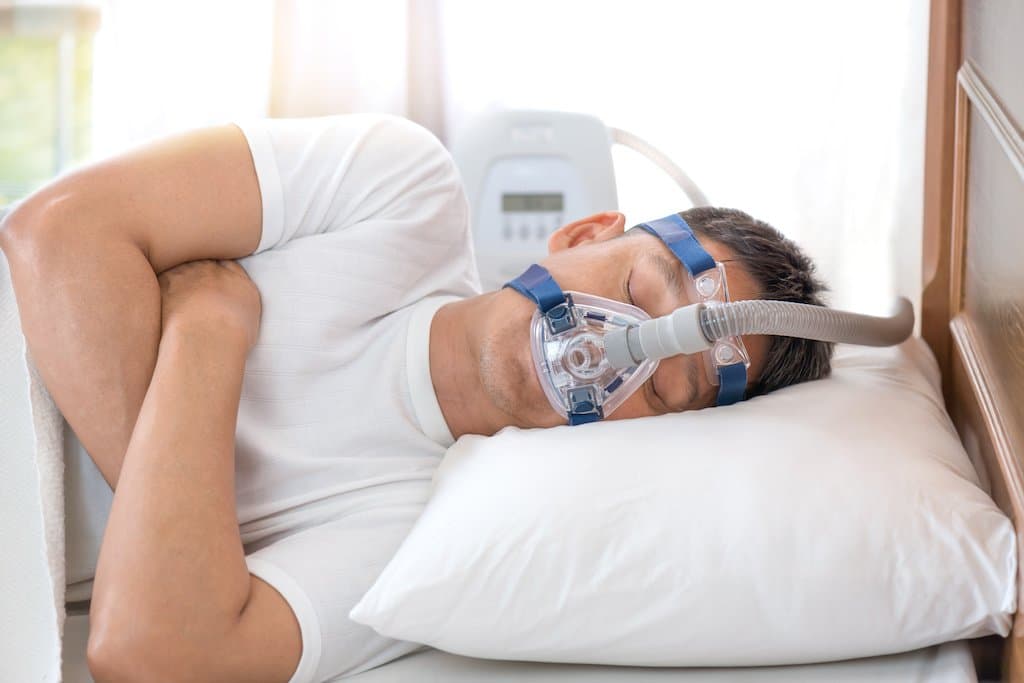
APAP is an acronym that stands for Automatic Positive Airway Pressure, which is a type of treatment that requires an APAP machine. There are many different names for APAP, including Auto Adjusting CPAP, SmartPAP, AutoPAP, and Self-Adjusting CPAP. These terms all refer to the same thing: a treatment designed to help people with sleep apnea breathe better while resting at night.
APAP machines work by keeping a patient’s airways open in their sleep through positive air pressure. As the name implies, this machine is self-adjusting, meaning it will tweak the air pressure it delivers as necessary on a breath-by-breath basis.
The key feature of APAP machines is that they are self-adjusting. As you switch positions when sleeping or go deeper into sleep, your breathing patterns change, and the machine can understand the changes and make adjustments as needed. This allows patients to sleep much better at night since they always receive the proper amount of positive air pressure to keep the airways open.
The working principle for any machine designed to keep your airways open remains the same. It fills your lungs with filtered, pressurized air while you sleep to keep your lungs from collapsing. With an APAP machine, you can breathe easily without apnea attacks keeping you up at night, which is a big help for people with sleep apnea.
APAP machines are ideal for anyone struggling with sleep apnea. Since they have self-adjusting features, they are best recommended for patients who change their breathing patterns and sleeping position at night. With an APAP machine, your lungs will stay open and clear the whole night through, making it much easier to sleep.
Sleep apnea can be very disruptive. On top of that, many people tend to shift around on their beds and change their sleeping positions and breathing patterns in the middle of the night. An APAP machine is specifically designed to adjust to your breathing and keep your airways open the whole night through, regardless of sleeping position or breathing patterns.
One of the biggest draws of an APAP machine and APAP therapy is the size of the machines. Generally, the cost of an APAP machine varies depending on the size and model of the machine. APAP devices come in a wide variety of sizes, such as this ResMed Auto Travel CPAP Machine. These devices are ideal for people constantly on the move, as they are designed to fit into a convenient bag and be used on an airplane, in the car, or on the bus.
APAP machines use a motor to push air into your lungs via a tube connected to a facemask. There are also larger APAP machines designed for home use that have more robust features and more powerful motors. So, regardless of the size of the machine, you are going to need a couple of accessories on top of that.
When choosing an APAP machine, always consider where and when you’re going to use it. That way, it will be much easier to figure out the proper size for your needs.
APAP therapy is a great way to alleviate the major symptoms of sleep apnea. The biggest pro to using an APAP machine for sleep apnea is that it adjusts to your own sleeping and breathing patterns. Normal CPAP machines function in one setting throughout the entire night. For some people, that works fine as they don’t change sleeping positions in the middle of the night. But for other sleepers, the machine needs to make adjustments to ensure their airways remain open the whole night to prevent a sleep apnea event.
Another huge draw of APAP therapy is that the machines are available in a variety of sizes. So, whether you need a machine to help you sleep through a flight or you need a larger model that will be a mainstay on your bedside, it’s easy to find a model that fits your needs just right.
Now it’s time to look at the downside to APAP therapy. The biggest thing to consider is the price difference. APAP therapy and machines cost significantly more than their standard CPAP counterpart. The boost in cost is largely due to the fact that APAP machines have more advanced features.
With APAP machines, a common complaint of patients is that the machine can be slow in making changes, which can lead to people having a sleep apnea event. And since manufacturers use different algorithms for adjusting the pressure, APAP therapy can also be fairly inconsistent.
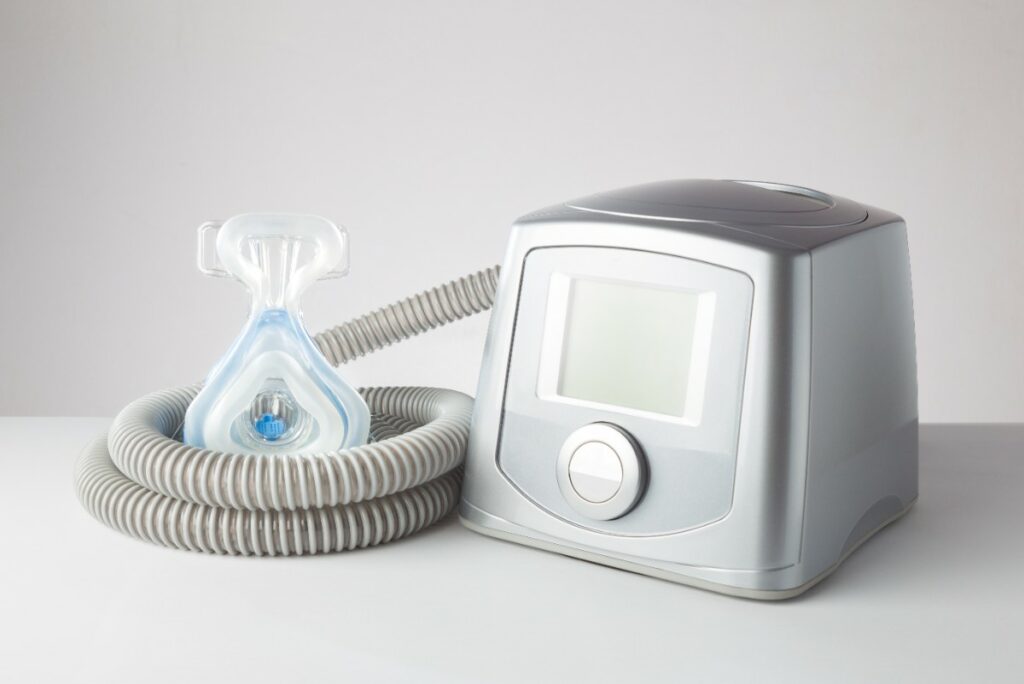
The predecessor to APAP therapy is CPAP. CPAP is a treatment that involves using a machine to keep your airways open while sleeping and prevent a sleep apnea event. In fact, there are many people who call APAP machines and treatments self-adjusting CPAP, as that is basically what it is.
The main difference between this therapy and APAP is that these machines work on a single, fixed setting the whole night through. So, if you adjust your sleeping position or breathing pattern in the middle of the night, the machine can’t make changes to pressure.
Like with any treatment, there are some side effects that people have with CPAP therapy, but since it does a great job of alleviating symptoms, many patients willingly use a CPAP machine whenever they sleep.
Most sleep apnea therapy and treatment methods utilize the same basic working principle: keeping the airways open at night. A CPAP machine can keep your airways open and prevent your lungs from collapsing by feeding your filtered and positively pressurized air into your lungs.
These machines deliver air using a motor, which pushes the air through the filter into a tube, eventually reaching your lungs through a facemask. Once you input the appropriate settings for a CPAP machine, the machine stays like that and will not adjust air pressure the entire night.
When making a comparison of CPAP vs. APAP therapy, it’s important to note that no one treatment is better than the other. Instead, certain treatment styles may be better suited for other patients.
For example, in the case of CPAP, if you’re a person who doesn’t move too much at night but suffers from sleep apnea, a CPAP machine could be the right choice for you. It doesn’t adjust pressure throughout the nights, so it feeds you a consistent and steady filter air supply. On top of that, CPAP is the more economical option as these machines are generally more affordable than their APAP counterparts.
In this day and age, CPAP machines come in a variety of sizes, each intended for different purposes. For example, the ResMed AirSense 10 AutoSet CPAP with HumidAir machine is a robust CPAP device that is ideal for the bedside. But since it’s relatively small in size, you can even travel with it, which is especially important for people on the move.
As we mentioned earlier, many people in the United States struggle with sleep apnea, so it’s important to have models in different sizes for different purposes.
CPAP is the most common therapy for people with sleep apnea. Since it doesn’t require a device to detect breathing changes and keeps a constant pressure throughout the whole night, CPAP machines are fairly inexpensive. Since this treatment is the more affordable option, it’s ideal for people who don’t want to bust the bank but still need uninterrupted sleep at night.
Since CPAP machines have been around longer, there’s also much more variety in the market. There are silent models, travel-friendly models, and larger machines that are designed for heavier use.
The biggest con of using a CPAP machine is that it doesn’t adjust throughout the night. Many sleepers end up in a variety of different positions in the evening, which changes your breathing pattern. On top of moving around, as you descend into different levels of sleep, your breathing patterns also change, and it’s always ideal to have a machine that can make adjustments when necessary.
A couple of years ago, Phillips had to recall certain CPAP machines due to a manufacturing error. While this is a rare event, it’s something you need to consider when buying a CPAP machine. Always make sure to research the model to ensure that it hasn’t been recalled or declared ineffective for treating sleep apnea symptoms.
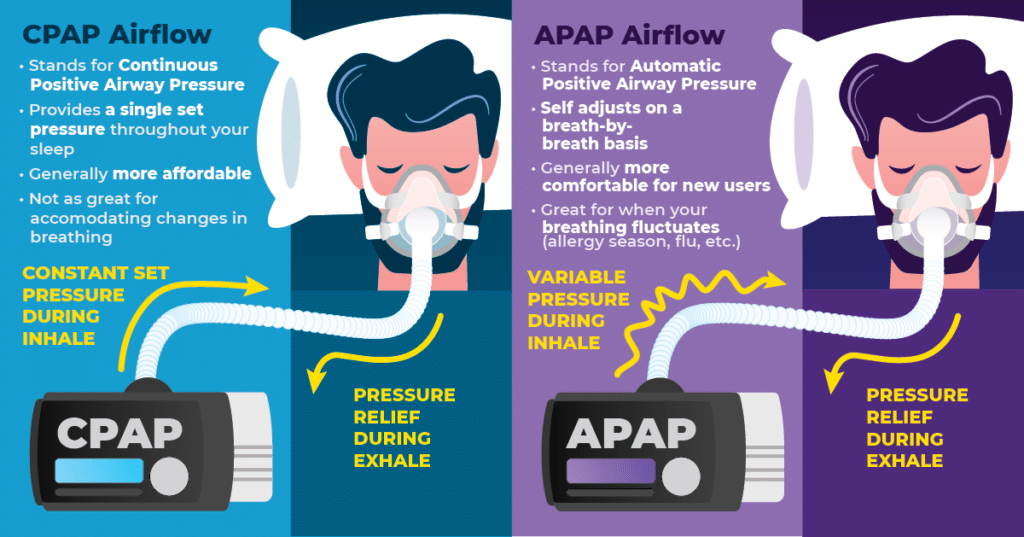
Now that you have a rough idea of each type of treatment, it’s time to decide which one is the right one for you. CPAP vs. APAP for sleep apnea is a hot debate amongst professionals and people who suffer from the condition alike.
When you ask which is better, it’s impossible to give a straight answer. This is because each person has their own unique set of needs and preferences, which makes it hard to come up with an objectively better choice.
Instead of asking which one is the better overall option, you should be asking which one is the better choice for you or the person suffering from sleep apnea. Below, we discuss some of the factors that go into deciding which option is the right one for you.
First things first: what are you looking to achieve from the treatment? When choosing between the different sleep apnea therapy methods out there, your personal goals play a huge role in determining the better option for you. APAP is designed to improve your own receptiveness to positive air pressure treatment. If you’ve tried CPAP in the past and it didn’t work for you, then APAP can be a great way to ease you into the treatment since these machines can adjust to your needs on a breath by breath basis.
CPAP is designed to help patients achieve a full night’s sleep. Through providing positive air pressure, CPAP clears your airways and keeps them open while asleep. This greatly reduces the likelihood of being awoken by a sleep apnea event.
Another thing to consider is the construction of the machines. Along with the materials used to make them, you also have to consider how they were built. It’s always important to look back at your goals when deciding on the right construction of the machine. That way, you can decide the size you need, the materials, and any other extra feature required to help you get a full night’s sleep consistently.
Keep in mind, when comparing the CPAP vs. APAP cost, you can expect APAP machines to be more expensive. So, you might have to pay extra for an APAP machine with quality construction compared to a CPAP one with the same build.
Now it’s time to really decide which treatment and therapy belong in your home. Since we’ve had a proper comparison of CPAP vs. APAP, it’s time to look at specific applications.
REM (rapid eye movement) is the stage of sleep where we sleep the deepest, and it can be very frustrating for REM to be interrupted by a sleep apnea event. For better REM sleep, we recommend choosing an APAP device. As mentioned earlier, APAP machines change pressure depending on your breathing pattern. When we enter REM, our breathing changes, and an APAP will be able to make the necessary changes to ensure you go through the entire stage without a problem.
APAP machines adjust automatically depending on your breathing pattern. So, if you have multiple breathing changes throughout the night, the positive pressure may not clear your airways enough, which could result in broken sleep and other common sleep apnea symptoms. For people whose breath changes, while sleeping, an APAP machine is the better option.
Tossing and turning throughout the night affect our breathing pattern. Different sleeping positions allow our bodies to breathe differently, so APAP is the ideal machine for you if you’re moving around in bed. Since these machines adjust to your own breathing patterns at specific points in time, the auto-adjusting feature of APAP is especially important.
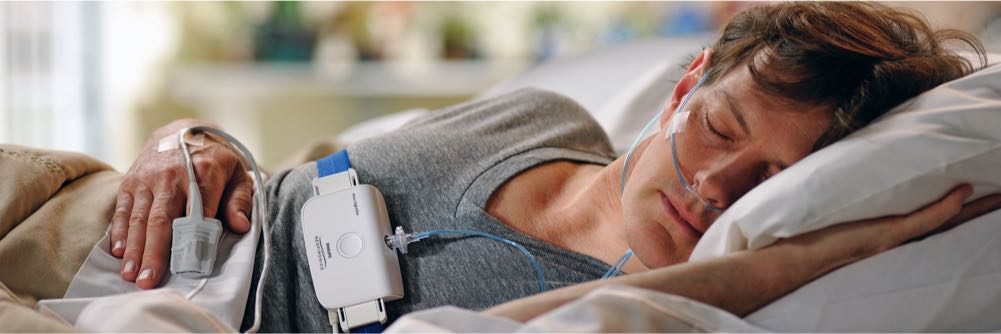
It’s very important to get tested for sleep apnea to get a complete and accurate picture of your condition. An HSAT Trusted Source AASM Home Sleep Apnea Testing (HSAT) Position Statement An HSAT is a medical assessment that can be ordered by a physician for the diagnosis of obstructive sleep apnea (OSA) in select adults. aasm.org is commonly used by doctors to assess whether an individual has sleep apnea and the details of their condition. That way, your doctor can recommend the right type of treatment for you, and it will be easier to decide between the APAP machine vs. CPAP options.
The comfort of the machine and the therapy largely depends on the individual and how they respond. However, many people out there have found CPAP machines and therapy the more comfortable option. However, keep in mind that both CPAP and APAP machines require you to wear a facemask, which takes some getting used to when sleeping.
The number of pressure settings on the machine depends on the make and model. Both CPAP and APAP machines have multiple pressure settings that you can choose before you sleep. However, the difference between Dreamstation CPAP and APAP machines is that APAP machines can automatically adjust based on your breathing patterns throughout the entire night, making APAP the more versatile option.
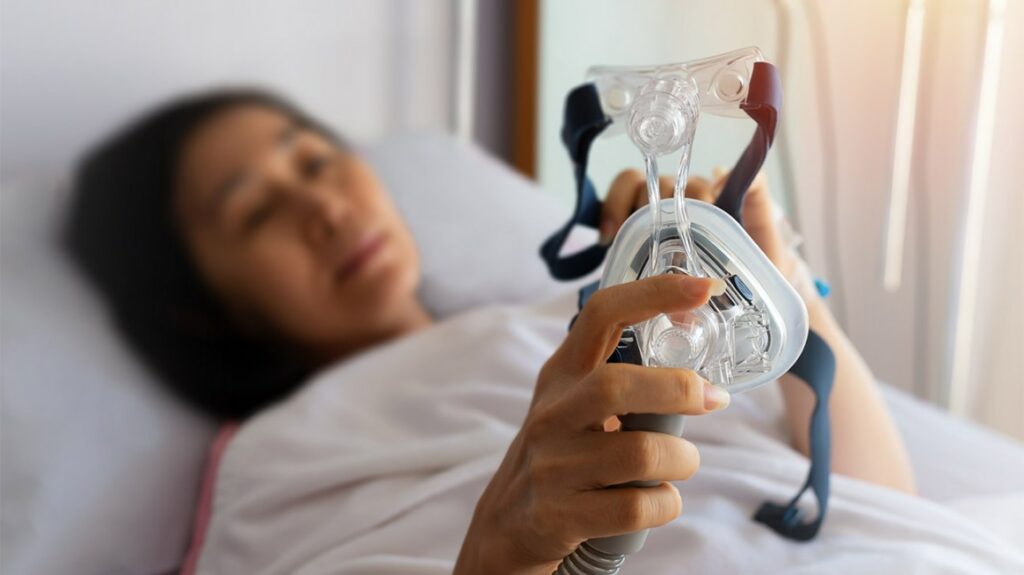
CPAP and APAP machines utilize the same mask. So, if you’ve already tried a CPAP machine and are considering making the switch, you can probably use the same mask, but make sure to double-check to make sure. When it comes to APAP and CPAP machines, there are a wide variety of masks out there.
People have different head and face shapes, and using the wrong type of mask can make you feel very uncomfortable. When you begin CPAP therapy, regardless of the machine, you will have to get used to the feeling of sleeping with a mask on. And while there is no way to instantly feel comfortable wearing a mask while sleeping, choosing the right design and shape for your face definitely makes it much easier.
There is no definitive and objective “best mask shape” out there. This is because each individual has their own needs and preferences, and it’s always important to choose the right shape for you.
Just about any CPAP machine out there can result in side effects Trusted Source 7 Common CPAP Machine Side Effects (and Ways to Avoid Them) Don’t let the side effects of CPAP use stop you from getting a good night’s sleep! Learn what to look for and how to avoid these common CPAP problems. cpapsupplies.com . This rings true whether you use CPAP or APAP technology. There is no difference in CPAP vs. APAP side effects because they are essentially the same treatment. It’s just that APAP machines adjust depending on your breath.
The most common side effect that people experience with CPAP machines is a congested nose. Along with that, some patients also experience dry eyes, claustrophobia, difficulty exhaling, and skin irritation. All of these side effects have a fix, and we always recommend consulting your doctor before making any changes. Remember, your doctor always knows what’s best for you, and changing pressure settings without notifying your doctor can draw in some serious side effects.
There you have it, an in-depth comparison of two of the most common treatment methods for sleep apnea.
Sleep apnea affects many adults in the United States and around the world. It can sometimes lead to complications later on, but usually, you only have to worry about the short-term symptoms, which can be irritating and get in the way of your day.
When figuring out the different treatment methods and therapies for sleep apnea, APAP vs. CPAP vs. BiPAP is a hot topic for debate. And now that you’re acquainted with the main differences between APAP and CPAP, it will be much easier to figure out the right treatment for you!
